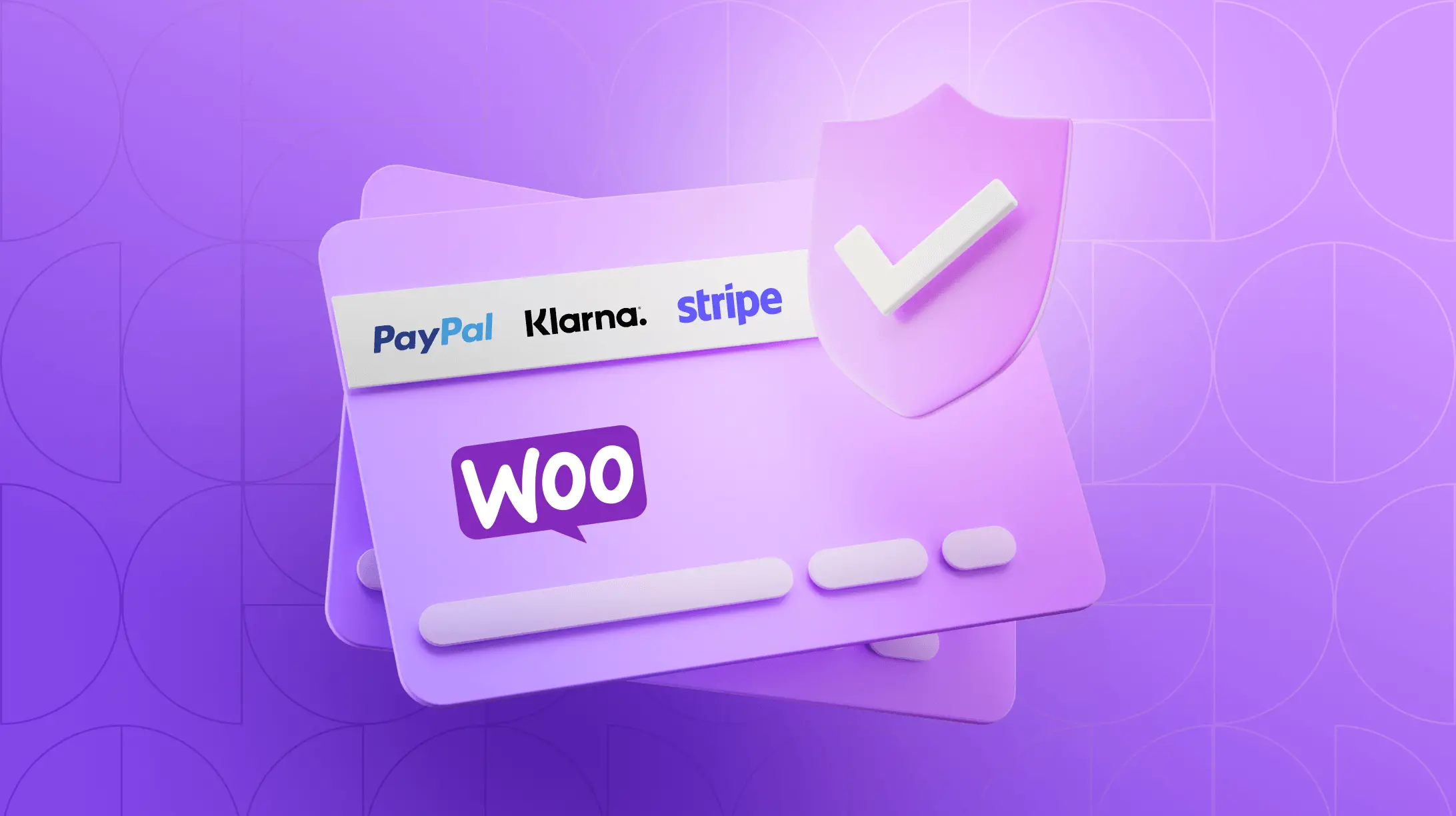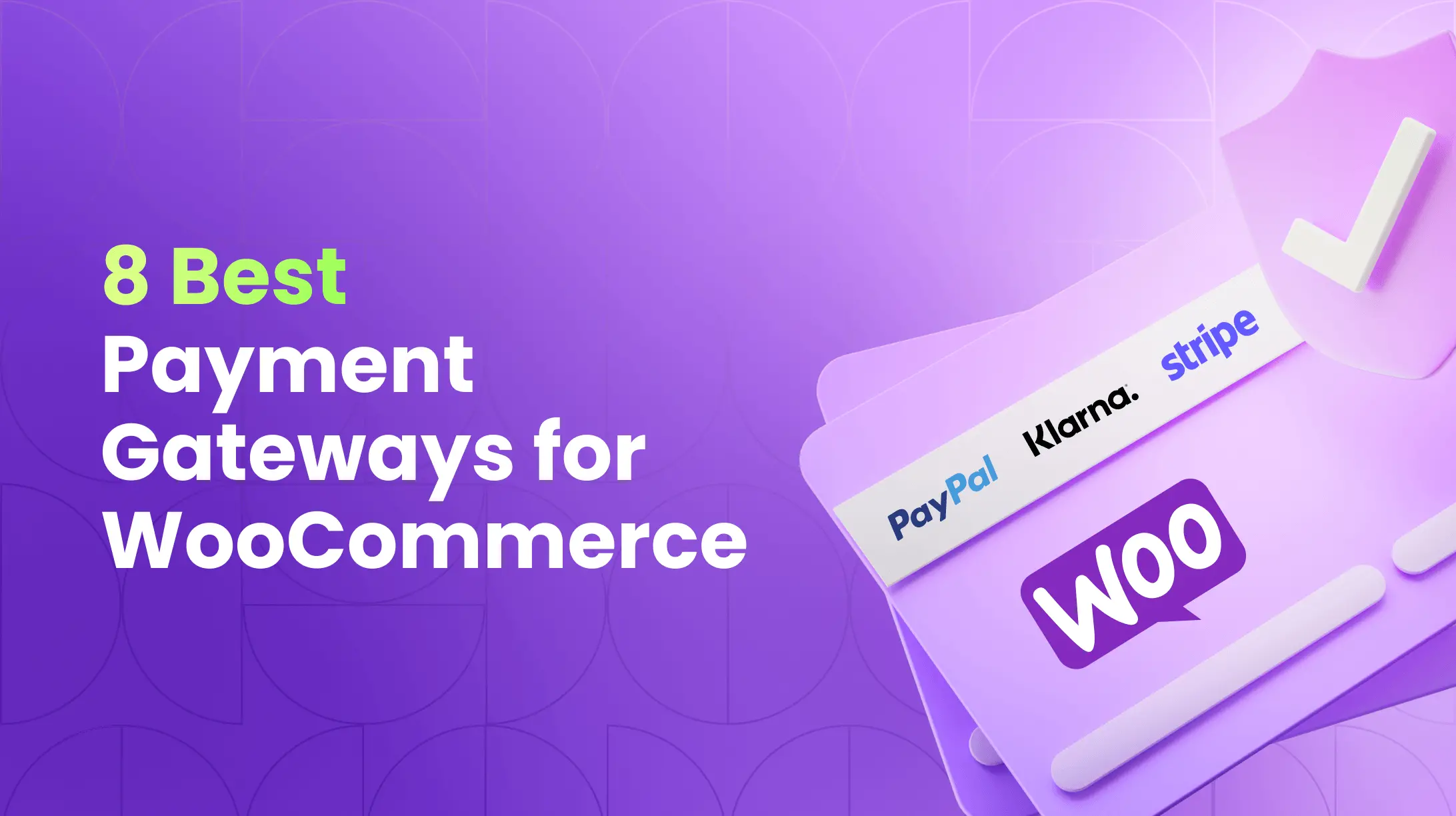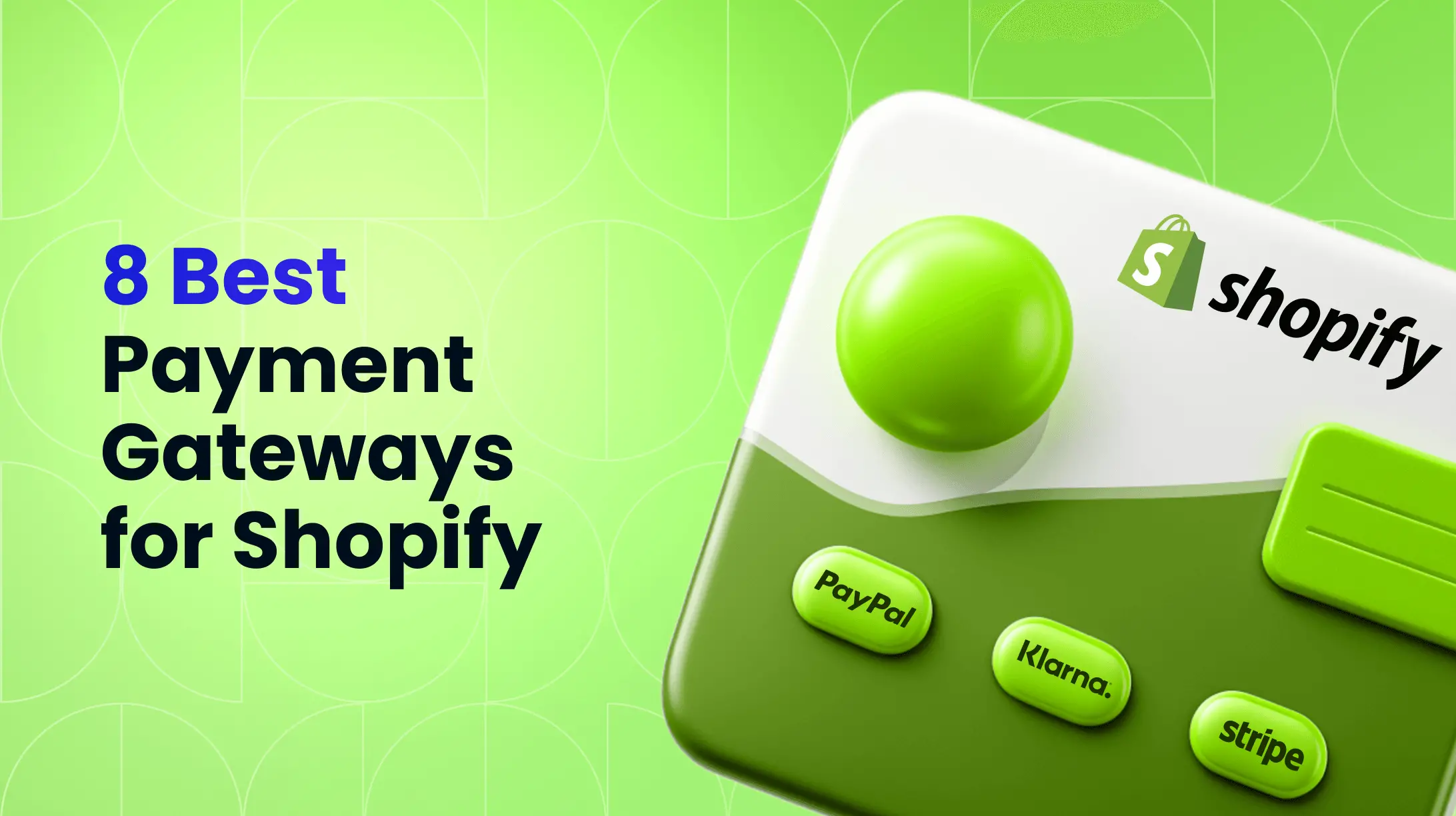0%

Did you know that 20% of online shoppers abandon their carts if their preferred payment method isn't available? This highlights the importance of offering diverse and flexible payment options.
Many e-commerce businesses focus too much on cost and overlook the need to accommodate diverse payment preferences, which leads to lost sales and a poorer customer experience.
In this article, we'll explore why payment gateway is important and which option is better for your business needs.
What Are Payment Gateways?
Payment gateways are technology services that facilitate secure online transactions by acting as intermediaries between your store’s website and the financial networks that authorize and process customer payments.
In an e-commerce context, they ensure that sensitive payment data is encrypted and transmitted securely, authorize the transfer of funds from your customers' accounts to yours, and help protect against fraud during online purchases.
Why You Need a Payment Gateway
Payment gateways are a very important point in online transactions. They allow easy exchanges between sellers and buyers, ensure smooth payments, and protect sensitive financial information. Let’s dive deeper into specific aspects of their importance:
Securing Transactions
Modern payment gateways employ state-of-the-artsecurity protocols to ensure the confidentiality of sensitive transaction data (e.g. credit card information). Payment gateways offer security measures against fraud and data breaches through the encryption of information exchanged between the customer, you, and the bank.
Building Customer Trust and Satisfaction
In an age where consumers are more cautious about sharing their financial data online, a secure and efficient payment gateway can significantly enhance customer confidence. When customers know their transactions are protected, they develop trust that encourages them to return.
Facilitating International Transactions
The rise of global commerce requires tools that can accommodate cross-border transactions with ease. Payment gateways offer flexibility in processing payments in multiple currencies, which makes it simpler for e-commerce businesses of all sizes to expand their reach.
Enhancing User Experience
A seamless payment gateway enhances user experience and reduces cart abandonment. Features like saved payment information, digital wallet integration, and a straightforward checkout process lead to smoother transactions and higher customer satisfactionAccommodating Diverse Payment Methods
A variety of payment options, such as credit/debit cards, digital wallets, and buy-now-pay-later services, allows you to meet your customers' preferences. This flexibility increases accessibility, removes purchase barriers, and improves conversion rates.
Payment Gateway vs. Payment Processor
Before we proceed further, let’s clarify the difference between a payment gateway and a payment processor.
A payment gateway handles the front-end aspect of the transaction, such as encrypting sensitive payment information and directing it to the payment processor for approval. It ensures the transaction is secure, seamless, and properly routed. Some examples of payment gateways include PayPal, Authorize.Net, and 2Checkout.
A payment processor, on the other hand, manages the back end of the transaction. Once the payment gateway transmits the payment data, the processor deals with the actual transfer of funds from the customer’s bank to the merchant’s account. Examples of payment processors include Vantiv, First Data, and Worldpay.
Mind that many companies, such as Stripe and Square, combine both services into a single solution, offering seamless integration for businesses.
Get in touch
with our expert
Discuss your project requirements and get a free estimate.
Get in touch
with our expert
Discuss your project requirements and get a free estimate.
Types of Payment Gateways
Payment gateways come in different types, each offering distinct features and advantages based on your business needs.
- Hosted Payment Gateways – These redirect customers to a secure payment page hosted by the gateway provider. Examples include PayPal and Stripe. While they are easy to integrate, some customers may find the redirection process less seamless.
- Integrated Payment Gateways – These allow customers to make payments directly on your website, giving you more control over the payment experience. Popular options include Authorize.Net and Square.
- Self-hosted Payment Gateways – With this option, you handle the entire transaction process on the site, maintaining more control. This requires more advanced technical knowledge but can offer a highly customized solution. Examples include Braintree.
- Mobile Payment Gateways – These are designed for processing mobile payments, supporting methods like mobile wallets (e.g., Apple Pay or Google Pay) and QR code payments. They are ideal if your business has a mobile-first audience.
- Bank Transfer Payment Gateways – These gateways enable direct bank transfers from a customer’s bank account to the merchant. They are typically used in regions where credit card use is low.
Key Payment Gateway Features
A robust payment gateway process comes equipped with various features designed to enhance security and user experience:
- Security Protocols: Adopting technologies like SSL (Secure Socket Layer) ensures that data transferred between parties is encrypted. PCI compliance further mandates that payment gateways adhere to specific security standards, ensuring the safe handling of cardholder data.
- Fraud Prevention Measures: Advanced payment gateways incorporate fraud detection tools and algorithms to identify unusual patterns and flag suspicious transactions.
- User Experience Enhancements: Offering multiple payment methods (credit/debit cards, digital wallets, bank transfers) caters to broader customer preferences, facilitating a smooth and hassle-free transaction process.
- Integration Capabilities: Seamlessly integrates with e-commerce platforms and systems for smoother payment processing.
- Advanced Analytics: Offers tools for insights into transaction patterns and customer behavior.
- Global Payment Support: Supports multiple currencies and languages to cater to an international audience.
How Payment Gateways Work: Step by Step
Payment processing gateway plays a key role in secure and efficient transactions between you and your customers. That means you should be aware of how it works:
Customer Initiation
The transaction starts when a customer orders on your website and selects 'place order' on the checkout page. They choose their payment method, such as credit card, debit card, or digital wallet, and enter their details into a secure form. This action indicates their intent to purchase and initiates the transaction.
Data Encryption
Once the payment information is entered, it is captured securely and encrypted to ensure data safety and prevent unauthorized access. Encryption converts the customer's payment details into a code that only authorized entities can decipher. This step is important for maintaining the confidentiality of sensitive information, such as card numbers and CVVs, during transmission.
Authorization Request
After encryption, the payment data goes to your bank's payment processor, which forwards it to the card network or financial institution (e.g., Visa, MasterCard). They then request authorization to verify the payment details and confirm sufficient funds or credit are available.
Bank's Response
The issuing bank, which is the bank that issued the customer's payment card, receives the authorization request. The bank conducts a series of checks to verify the transaction details, assess the customer's account balance or credit limit, and ensure there is no fraud detected. Based on these checks, the bank decides whether to approve or decline the transaction.
Approval or Decline Message
The bank sends an approval or decline message to the payment processor. If approved, it indicates the payment can proceed; if declined, it explains reasons like insufficient funds or suspected fraud. The processor passes this response to the payment gateway, which informs you and your customer.
Completion
If the transaction is approved, the payment process moves to completion and transfers funds from the customer's account to yours, often via the payment processor or acquiring bank. You then fulfill the order, and a confirmation receipt is sent to the customer, which details the transaction's success and order specifics.
Popular Examples of Payment Gateways
The choice of payment gateway affects both your business's efficiency and customer satisfaction. Let’s explore some popular payment gateway options and their unique features:
PayPal
PayPal is a widely accepted and easy-to-use payment gateway, which supports over 25 currencies and is ideal for international transactions. It offers features like PayPal Credit and advanced fraud prevention. Merchants benefit from extensive reporting tools and seamless integration with e-commerce platforms.
Stripe
Stripe is favored by tech-savvy businesses for its robust integration capabilities and developer-friendly APIs, which enable customized payment solutions. It supports over 135 currencies and multiple payment methods, like Apple Pay and Google Pay. Stripe also offers powerful data analytics tools and security features for enhanced transaction protection.
Square
Initially known for its in-person payment solutions, Square has successfully expanded into online payments. It offers features such as business analytics, inventory management, and competitive transaction fees. Square supports multiple payment options and integrates with various e-commerce platforms, making it versatile for businesses of all sizes.
Authorize.Net
Authorize.Net, a veteran in payment processing, supports both online and in-person transactions with over 400,000 merchants. It features fraud detection, recurring billing, and customer information management. Authorize.Net integrates seamlessly with major e-commerce platforms and supports multi-currency processing.
Braintree
Braintree, a PayPal division, offers sophisticated yet user-friendly paymentsolutions, supporting PayPal, Venmo, credit cards, and digital wallets within a single integration. It excels in global reach, supporting over 45 countries and 130 currencies, and features advanced fraud protection and recurring billing to meet diverse business needs.
Choosing the Right Payment Gateway for E-commerce
The optimal payment gateway selection is a key to your business’s online strategy. Consider the following factors:
- Fees: Understand the pricing structure, including setup fees, per-transaction fees, and potential hidden costs.
- Features: Align gateway features with business needs – whether it's robust APIs, recurring billing, or multi-currency support.
- Support: Reliable customer support could make a difference during a critical transaction issue.
- Security: Ensure compliance with PCI-DSS and features like fraud detection and encryption to protect customer data.
- Integration: Check for easy compatibility with your e-commerce platform and business tools to avoid technical issues.
- User Experience: Opt for a smooth, simple checkout to minimize cart abandonment and ensure mobile-friendliness.
To identify the best payment solution for your business needs, check out our comprehensive guide on choosing a payment gateway. It offers a detailed comparison table and deep insights into various factors to consider when choosing the right payment gateway for your e-commerce store.
Key Insights on Payment Gateways
To choose a payment gateway that fits your business needs, you should understand the payment gateway's meaning, how these systems operate, and consider popular options to find the best match for your store. A carefully selected gateway can streamline payment processing and enhance the user experience, which eventually leads to increased customer satisfaction and sales.
While the setup and selection process might seem daunting, our team at Transform Agency is ready to help. Reach out to our experts to ensure a smooth integration of a payment gateway into your store.
FAQ
What is the main function of a payment gateway?
A payment gateway’s primary role is to authorize payment transactions between your and your customer's bank and ensure the security of the card details. It acts as an intermediary, which encrypts sensitive information to ensure security during the transaction process.
Is a payment gateway necessary for online sales?
Yes, a payment gateway is a key for your secure online transactions, because it protects against fraud, and ensures smooth payment processing with your clients.
What costs are involved with payment gateways?
Payment gateways typically charge 2.9% to 3.5% per transaction plus $0.20 to $0.30, with possible setup fees ($0 to $300), monthly fees ($0 to $30), and chargeback fees ($15 to $25). Additional costs may include cross-border fees of 1.0% to 1.5% and optional service fees ($10 to $25).
Can payment gateways handle multiple currencies?
Certainly, many payment gateways support multi-currency transactions, which allows you to serve international customers easily. PayPal accommodates over 25 currencies, while Stripe supports over 135, both offering automatic currency conversion.
How do payment gateways ensure transaction security?
Payment gateways protect transactions through encryption, secure communication protocols, and compliance with industry security standards like PCI-DSS.
Can I switch payment gateways easily if I'm not satisfied?
Switching payment gateways is possible but may involve technical integration updates and potential costs. It's important to review contract terms and integration requirements before making a change.
How long does it take to set up a payment gateway?
The setup time for a payment gateway can vary depending on the provider and the specific integration needs. It can range from a few hours to several days. Simple setups may be quick, but complex integrations and customizations require more time for testing and troubleshooting.

Written with the assistance of Sergey Girlya
Adobe Commerce Business Practitioner | Certified PSM & PSPO at TA
Sergey ensures project success by validating business cases, defining success metrics, and identifying sustainable benefits. His proactive approach leverages existing systems, processes, and data to deliver additional value. Serge excels in planning, executing, monitoring, and controlling all aspects of the project lifecycle, ensuring meticulous attention to detail and strategic oversight.
Sergey ensures project success by validating business cases, defining success metrics, and identifying sustainable benefits. His proactive approach leverages existing systems, processes, and data to deliver additional value. Serge excels in planning, executing, monitoring, and controlling all aspects of the project lifecycle, ensuring meticulous attention to detail and strategic oversight.





